For our first lesson of Unit 2, students were asked to respond to the following entry task (written in their notebooks):
- What do you think is happening when you smell something?
- Why do you think we have a sense of smell?
The first question directly tested student recall of the content learned yesterday. Students will review, revise, and expand on their understanding of what happens when they smell something throughout the unit. After a class share-out of why students think we have a sense of smell, we worked through the Lesson 28 PowerPoint and then students all participated in an activity (guided by the Lesson 28 Worksheet) where they smelled five different scents and then compared their observations as a class. To reinforce yesterday’s lesson in which students learned about the connection between smell, emotion, and memory, students listened to snippets of songs while smelling each of the compounds. We will revisit the songs and smells later in the unit to see whether music had an effect on student retention of smell identities. After completing the individual smell test, students shared their individual thinking about the identity of each smell to reach a group consensus which they then wrote on the whiteboard (example shown below). Once each group shared their thinking, the identity of each compound and the class of smell (minty, sweet, or fishy) was revealed.
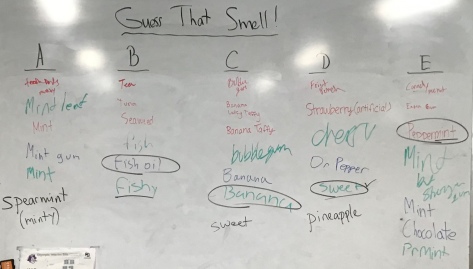
Based on the class results, students made connections between molecular formulas, chemical names, and scents (fishy, minty, or sweet). Each student group contributed a pattern observed from Table 2 of the Lesson 28 Worksheet and an example from one class is shown below:
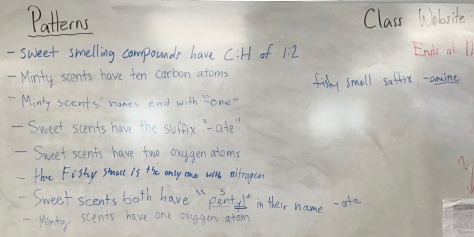
List of samples and songs:
- Tube A: spearmint extract (minty) – Yesterday
- Tube B: fish oil (fish) – Thriller (periods 2 and 3) / Baby Shark (periods 4 and 5)
- Tube C: banana extract (sweet) – Time After Time
- Tube D: pineapple extract (sweet) – Crazy Train
- Tube E: peppermint (minty) – Jump
Homework:
- Read Lesson 28 in the textbook. Login via hs.saplinglearning.com and enter your username and password.
- Write notes for Lesson 28 and work through the practice problems at the end of Lesson 28.
- Please ask questions about anything from Lesson 28 you do not yet fully understand.




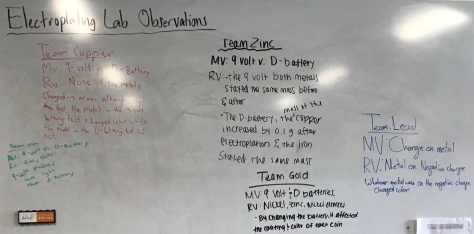
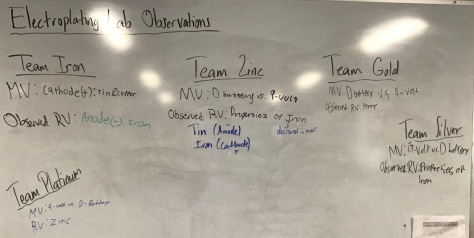
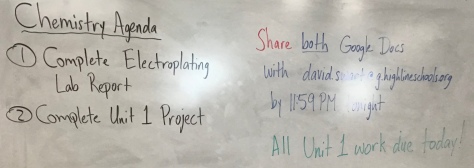
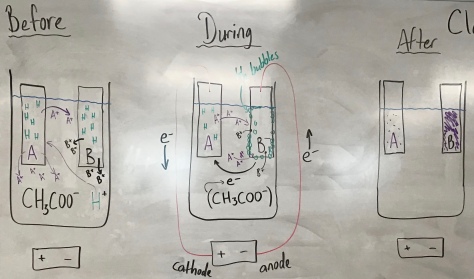


You must be logged in to post a comment.